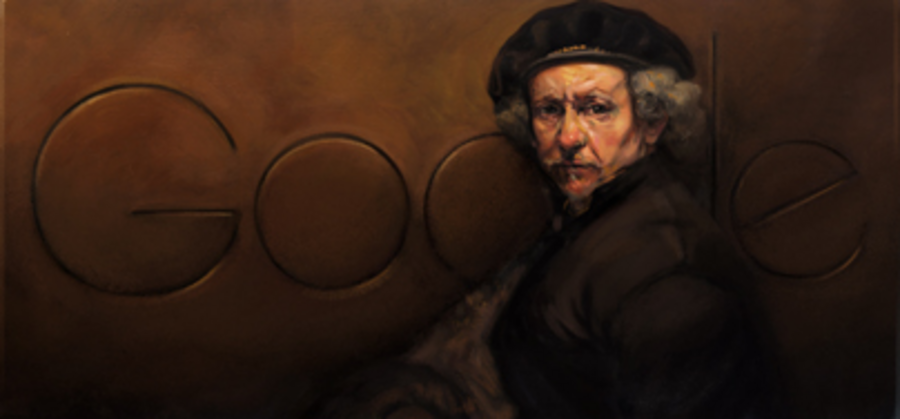Rembrandt van Rijn: A Dutch master remembered in a Google Doodle
Loading...
Monday would have been the 407th birthday of acclaimed Dutch artist, Rembrandt van Rijn, and Google is honoring this occasion not with a doodle per se, but with a self-portrait.
That Rembrandt, who took his first name as his artist’s signature at 27-years-old, should be honored with a self-portrait is fitting: the artist painted some 50 self-portraits, in addition to about 30 etchings and seven drawings of himself. Those works express not just introspection, but also the thoughtful attention that Rembrandt levied on his painted subjects - to the lowest and highest points of character, to our capacity for change, to motives and desires, and to how that humanity could resonate from oil lacquered on a page.
Rembrandt, who was born in Leiden, Netherlands in 1606 and left school to study painting at 14 years old, is perhaps best known for the paintings that depict not himself, but his particular understanding of the world. Rembrandt’s subjects are broad – biblical tales, inherited legends, contemporary dramas arrested mid-action, landscapes swathed in light – but what they share is a common interest in the unfolding of narrative, the telling of a story in just one frame. That was accomplished in painting stories arrested not just in mid-motion, but in painting portraits and landscapes that appear to refer to a broader narrative, that in their resonate emotion seem to imply a beginning and an end.
Rembrandt’s work makes scenes borrowed from remote ancient or fictional worlds bristle with palpable emotion. The people in his paintings are tactile, painted almost as illustrations, but with a roughness and thickness that makes them seem to stand from the paper. Their faces and limbs are expressive, caught in the narrative action and emotive in ways that translate from fictional tale to modern viewer. The landscape answers their pain or sorrow or rage and responds to it in sweeping shades of rich color.
Rembrandt achieved fame quickly. At just 22 years old, he had amalgamated enough prestige to take on his own students, and throughout his years he acquired fans – and sums – often not earned to painters until after their death. He, as well as many of his pupils, are now included in lists of the greatest painters of the Dutch School, which spans some 200 years from about 1400 to 1600.
Still, Rembrandt’s private life was not a happy one. His first wife died at just thirty years old, and only one of his four children lived to adulthood. Though he was fortunate to have been popular and well-paid for his works, most of his fortune was squandered to his expensive tastes. He declared bankruptcy about 13 years before he died, at the end of a tragic and deeply human tale that resonates like those he painted.
Perhaps, then, Élie Faure, the French art critic and historian, was writing about both his work and Rembrandt himself when he wrote: “His humanity is truly formidable, it is fatal like lament, love; change continues, indifferent and dramatic, between all that is born and all that dies. He follows our steps to death in the traces of blood which mark them. He does not pity us, he does not comfort us, because he is with us, because he is us.”






